The AMD Radeon RX 5500 XT Review, Feat. Sapphire Pulse: Navi For 1080p
by Ryan Smith on December 12, 2019 9:00 AM ESTSynthetics
While we’ve already had our an in-depth at Navi with the launch of the RX 5700 series earlier this year, new GPUs within the family sometimes expose bottlenecks that we haven’t seen before. So our synthetic tests can help to highlight these bottlenecks, as well as any other changes that the GPU designers may have made in the process of scaling down their GPUs.
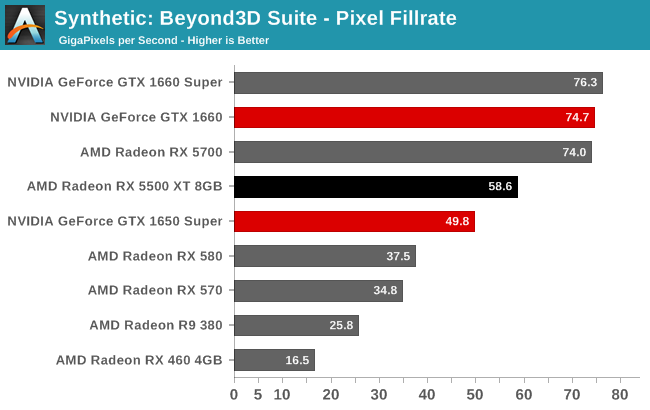
The RX 5500 XT does surprisingly well in our pixel fillrate benchmark. Even though it only has half the ROPs and half of the memory bandwidth of the more powerful RX 5700, it’s able to deliver ~79% of the pixel fillrate in this test. This is much better than I was expecting. It may be a sign that AMD’s ROP partitions aren’t seeing great scaling from 32 to 64 pixels per clock, or alternatively that AMD has made some significant efforts in keeping the RX 5500 XT from diving too hard due to its more limited resources.
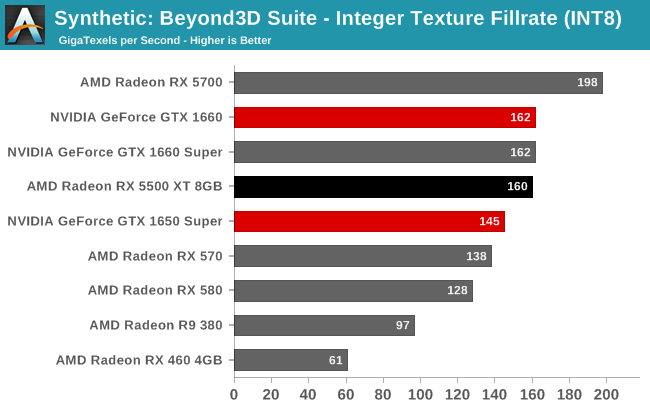
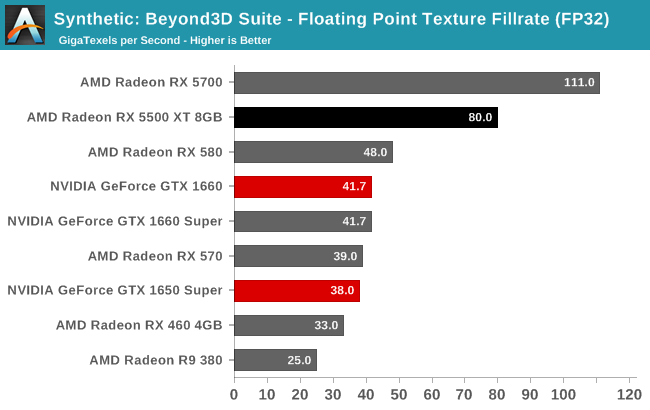
Meanwhile texture fillrates are more in line with our expectations. The RX 5500 XT has 14 fewer CUs than the RX 5700 but a slightly higher clockspeed, and its results reflect that.
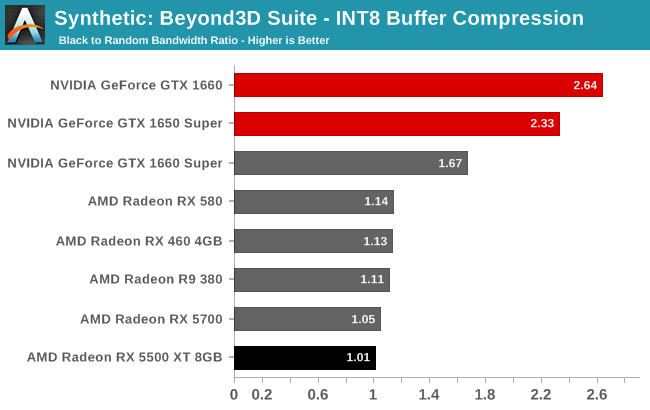

Our buffer compression ratios are also relatively consistent with what we’ve seen on the RX 5700 cards. AMD does have capable delta color compression technology; however it seems to struggle under intensive synthetic workloads. Under lighter workloads we see better compression ratios, but lower throughput overall.
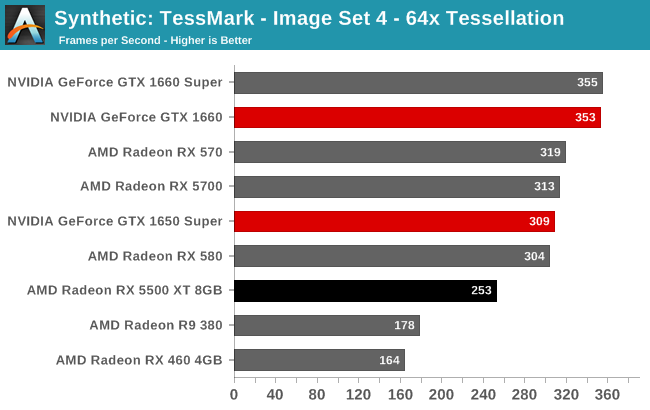










97 Comments
View All Comments
Freeb!rd - Friday, December 13, 2019 - link
For those of us with older cards, I would've appreciated the GTX 1060 6GB & GTX 1070 included in the performance graphs.Freeb!rd - Friday, December 13, 2019 - link
Especially since I have both those and some 580s lying around.sheh - Friday, December 13, 2019 - link
https://www.anandtech.com/bench/product/2577?vs=25...alfatekpt - Friday, December 13, 2019 - link
Depending on price it seems it can actually fight with 1660 Super because the differences are a few FPS with a lower noise/power consumption.ballsystemlord - Saturday, December 14, 2019 - link
@ryan If you can't run opencl on windows why not run your tests on Linux? I'd imagine that some of the programs have a version that runs on Linux.isthisavailable - Saturday, December 14, 2019 - link
The 8 gb version should not exist and the 4gb version should be $10 lower to match 1650super in price while beating it in perf. Why would you buy 8gb version when NVIDIA has 1660 for $10 more.Also, rx5500 gaming laptops when?
Maxxie - Saturday, December 14, 2019 - link
This looks like a gaming card, again. For the professional segment, AMD needs to focus more on compute and reducing operating power/temperature. I was forced to upgrade a working AMD RX 580 4gb to Nvidia's RTX 2060 Super 8gb to get GPU acceleration working in MATLAB. Major benefit the doubled graphics memory, and the new card runs noticeable cooler. Still, I spent $300 on the RX 580 earlier this year wasting a bit of budget. That's going to keep me from trying any AMD cards until they give focus to more than the entertainment segment.dr.denton - Sunday, December 15, 2019 - link
I really don't know much about professional use, but has this not been AMD's biggest problem in the past years? Having GPUs with great compute abilities, but somewhat lacking for gaming?Personally, I'm glad they finally have the ressources to develop two lines of architectures, one focussed on gaming and one for professional use.
ballsystemlord - Saturday, December 14, 2019 - link
One grammar mistake:"...one that TSMC's customers are jockeying to secure wafer starts due to very high demand."
Missing "for":
"...one that TSMC's customers are jockeying to secure wafer starts for due to very high demand."
Father Time - Saturday, December 14, 2019 - link
Closing Thoughts -> 4th last paragraph:"6% more perforamnce".
Great article though.
Does AMD still suffer from Day 1 performance not reflecting the huge gains they get over NVidia as drivers mature? It was a large issue in generations passed (ever since the 2900XT), and considering how close this card is to the NV equivalents, do we expect it to win out over time, or is that a thing of the past now that architecture has changed significantly, along with the technology and the people involved?